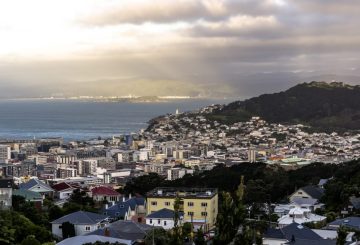Noong nakaraang tag-araw ay mabuti para sa negosyo sa Fox Glacier
.
Isang bayan ng multo – iyon ang kinatakutan ng mga residente ng Fox Glacier na ang kanilang bayan pagkatapos ng pag-access sa kanilang pangunahing atraksyon ng turista ay pinutol apat na taon na ang nakalilipas.
Noong Marso 2019, isang pangunahing pagguho ng lupa ang sumira sa daan patungo sa glacier.
Mas mababa sa anim na buwan mamaya, lokal ay sinabi hindi ito ay muling pagbubukas at ang pamahalaan ay stepping in upang makatulong sa pondo alternatibong atraksyon.
Ang may-ari ng Cafe Nevé na si François Goosen ay hindi kumpiyansa tungkol sa hinaharap ng bayan sa maagang resulta ng pagsasara.
Noong nakaraang tag-araw ay mabuti para sa negosyo, at ang bayan ay nag-tick at naghahanda para sa susunod na alon ng mga bisita na darating mamaya sa taong ito.
Siya ay nanatiling maasahin sa mabuti tungkol sa isang iminungkahing scenic cycle at walking trail na nag-uugnay sa Fox Glacier at Franz Josef.
Ang Fox Glacier Guiding chief executive na si Rob Jewell ay nakakaramdam din ng maasahin sa mabuti.
Ang gobyerno ay nakatulong out na may malapit sa $4 milyon mula sa International Visitor Tourism and Conservation Levy.
Ang pera ay ginamit upang bumuo ng paglalakad at pagbibisikleta trail sa timog bahagi ng glacier, mamuhunan sa iba’t ibang mga atraksyon tulad ng isang bagong trail mula sa township sa Lake Matheson, pati na rin ang isang bagong araw lakad sa Lake Gault.




























































